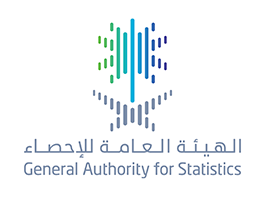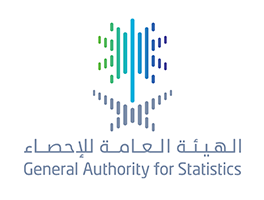“GASTAT” and Information & eGovernment Authority in the Kingdom of Bahrain sign MoU
21-12-2023
The General Authority for Statistics and the Information &eGovernment Authority in the Kingdom of Bahrain have signed a memorandum of understanding( MoU) to cooperate in the field of statistics and exchange of expertise. The aim is also to benefit from the best global practices to develop and enhance statistical work in both countries, in line with international standards, and to support decision-makers and scientific research. The (MoU) was signed by Dr. Fahad bin Abdullah Aldossari, President of the General Authority for Statistics, and Mr. Mohammed Ali Al-Qaed, CEO of the Information &eGovernment Authority in the Kingdom of Bahrain, in the presence of Duaa Sultan Alharban, Deputy Chief Executive, Statistics and Population Registry, and Ms. Lulwa Sami, Director of Communication and Marketing Department at the eGovernment Authority.
The (MoU) includes cooperation in areas such as exchanging expertise and information between the two parties to develop statistical work, including data availability, big data, IT infrastructure, exchange of statistical awareness programs, facilitating access to information, exchanging visits between experts and specialists in relevant statistical fields, and organizing conferences, seminars, and workshops. During the agreed period of the (MoU), which extends for five years, both sides will work on developing joint plans and programs to achieve the desired goals of cooperation between the statistical authorities of Bahrain and Saudi Arabia.
From his side, Dr. Fahad bin Abdullah Aldossari, President of the General Authority for Statistics in the Kingdom of Saudi Arabia, affirmed that the (MoU) aims to enhance the level of mutual cooperation between the two sides and strengthen coordination and integration of efforts in the field of statistics. This includes enhancing quality and efficiency, applying best global practices, and transferring expertise between statistical agencies. It also contributes to supporting the strategic work between the two countries in the statistical sector, aligning with the ongoing development of statistical agencies, and providing new opportunities for effective cooperation with the Kingdom of Bahrain in the field of information and statistical data exchange between the two countries.
He added that the (MoU) contributes to the development of methods and techniques for calculating indicators and providing accurate and up-to-date statistical data to enhance the sustainable development goals, supporting decision-makers and policymakers in both countries. He praised the fruitful cooperation between the General Authority for Statistics and its counterpart, Information &eGovernment Authority in the Kingdom of Bahrain, in addition to the exchange of knowledge and technical expertise between the two countries in the statistical field, leading to further enhancement of mutual cooperation in the future.
On his part, Mr. Mohammed Ali Al-Qaed, CEO of the Information &eGovernment Authority in the Kingdom of Bahrain, praised the signing of the (MoU), affirming that the cooperation between the two countries in the field of statistics is an enduring cooperation, reflecting the strength, durability, and depth of the historical and fraternal relations between the two sides. He also explained that cooperation with the General Authority for Statistics in the Kingdom of Saudi Arabia will contribute to achieving several goals, including enhancing joint work between the two countries, improving the efficiency of statistical systems, and establishing a committee to supervise the plans and programs related to the areas of mutual cooperation included in the (MoU). The committee will oversee the implementation of development areas and overcome any challenges that may arise, in order to make optimal use of advanced statistical experiences, expertise, and programs that enhance the quality of the statistical work system.
Furthermore, the CEO emphasized that the signing of the (MoU) with the General Authority for Statistics stems from the distinguished regional leadership of the Kingdom of Saudi Arabia in the field of statistics. KSA possesses an effective statistical system with innovative practices and a model that regional statistical systems can emulate. He affirmed that leveraging these experiences and rich statistical practices is a real gain for the Bahraini statistical system.
It is worth mentioning that the signing of the (MoU) reflects the belief of the eGovernment Authority and the General Authority for Statistics that enhancing regional and international cooperation contributes to meeting the growing demands for statistical data. This requires a statistical system capable of producing high-quality data in a timely manner, in line with the guidelines, definitions, and classifications adopted by the United Nations and compatible with the best international standards and practices. One of the best ways to keep up with emerging developments in the statistical system is through clear coordination and international cooperation that enables the exchange of best practices and transfer of expertise between statistical systems. Therefore, the signing of the (MoU) between Bahrain and Saudi Arabia is a real gain in facing the challenges and developments in the statistical system.





